|
Let's celebrate Jill Piscitello's new release! It looks SO GOOD! Congratulations, Jill! When murder provides a welcome distraction… On the heels of a public, broken engagement, Maeve Cleary returns to her childhood home in Hampton Beach, NH. When a dead body turns up behind her mother’s music school, three old friends land on the suspect list. Licking her wounds soon takes a back seat to outrunning the paparazzi who spin into a frenzy, casting her in a cloud of suspicion. Maeve juggles her high school sweetheart, a cousin with a touch of clairvoyance, a no-nonsense detective, and an apologetic, two-timing ex-fiancé. Will the negative publicity impact business at the Music Box— the very place she’d hoped to make a fresh start. Excerpt from A Sour Note With his mouth set in a grim line, he waited. If anyone else had enough nerve to presume she owed them an explanation, she would respond with a solid mind your own business. Instead, the seventeen-year-old still inside her refused to tell him to get lost. “He was hiding money in his office.” This was one of those times when learning how to wait a few beats before blurting out inflammatory information would come in handy. Each second of passing silence decreased her ability to breathe in the confined space. She turned the ignition and switched on the air conditioner. “How do you know?” His volume just above a whisper, each dragged-out word hung in the air. “I found it.” “When were you in his office?” He swiped at a bead of sweat trickling down the side of his face, then positioned a vent toward him. “Last night.” When would she learn to bite her tongue? Finn’s switch from rapid-fire scolding to slow, deliberate questioning left her unable to swallow over the sandpaper lump in her throat. “Where was Vic?” She stared at the back of the building, wishing she’d kept her mouth shut. “He’d left for the night.” If she averted her gaze, she could pretend his eyeballs weren’t bugging out of his head, and his jaw didn’t need a crane to haul it off his chest. “You were at the town hall after hours? Did anyone see you?” “A custodian opened his door for me.” She snuck a glance. Sure enough, features contorted in shock and horror replaced his boy-next-door good looks. About the Author
Jill Piscitello is a teacher, author, and an avid fan of multiple literary genres. Although she divides her reading hours among several books at a time, a lighthearted story offering an escape from the real world can always be found on her nightstand. A native of New England, Jill lives with her family and three well-loved cats. When not planning lessons or reading and writing, she can be found spending time with her family, trying out new restaurants, traveling, and going on light hikes.
2 Comments
I hold a special fondness for the Limbourg Brothers' image for July. It's a wonderfully agrarian scene. While the scything always catches this gardener's eye (although far beyond a sweet little flower bed or vegetable patch), it's the sheep shearing that makes me smile. That's because as summer presses on, the desire to do whatever it takes to cool off strikes more often.
My personal favorite method for dealing with the heat is to escape to the mountains. After that, the beach or a swimming pool works! And my go-to garment for daily living is a light sundress. How about you? Medieval folk also had their ways of dealing with the heat. They wore lighter clothing in summer, certainly, and they wore hats. They also took to the water, which regularly resulted in drownings as swimming wasn't a commonly-acquired skill. And, of course, the nobility had the luxury of escaping to their presumably cooler, country homes. As for the summer solstice, which this year is today, June 21, it always surprises me that it's the longest day of the year. The days in July and earlier August always seem much longer to me. I suppose it's because we are well-settled into summer by then, necessarily concentrating our outdoor time towards evenings and giving in (to the heat) to enjoy the different cadence of life. To many a medieval observer, the summer solstice was a day of celebration that held a touch of melancholy. It signaled the turn, slow as it was, to shorter, darker days. It seems a bit pessimistic, doesn't it? But at least they appreciated their long, summer days. This summer is a markedly different one for me. I will be more or less on hiatus as I've some healing and physical therapy to get through. It's a lot harder than I thought it would be, but it's all good. When I catch my breath, I will work on finishing All Shook Up, the sequel to Tremors Through Time. That being said, I do still have a few wonderful guests scheduled -- just a couple, really, and I'm bound to post now and then. I've been blogging for many, many years, so it will be an unusual and challenging experience not to. I will miss you! Do continue to check in with medieval ladies Mary Morgan and Barbara Bettis. I don't know that they'll be posting every week, but their posts and websites, as you probably know, are wonderful. In addition, I hope you will enjoy reading some wonderful,medieval romances under the shade of an umbrella as you soak up the season. Wishing you bright, happy days ahead! Happy Summer! I'm proud to welcome author Rosemary Kubli, whose spectacular romantic suspense Gullible launches this very day. I'm in the middle of reading it -- WOW! The characters leap off the pages! SO GOOD! We will learn more about Gullible, but first let's get to know Rosemary a bit better. By the way, it is Rosemary who chose a lovely green for her responses to my questions. I believe it is indicative of the lady herself. :) Welcome, Rosemary, and congratulations! Thank you for having me as your guest, Anastasia! I’m honored to appear on your blog. 1)What sort of books did you enjoy reading as a child? Did you have a favorite book or series? Wow! You’re making me reach far back into my memory bank! I can’t say I had a favorite book series, but my mother subscribed to the Reader’s Digest, and I always looked forward to reading the periodical’s short stories. I’d also read the novels Mom ordered through her monthly book club subscription. Now that I think about it, I was probably the only student in my middle school who was reading John le Carre and Mario Puzo! 2) What sort of books do you enjoy reading nowadays? My favorite stories involve mystery and suspense – murder/crime, cozy mysteries, legal/psychological thrillers. But thanks to the wonderful ladies in my book club, I’m reading fiction and non-fiction books that I would never have selected on my own. Good writing, I’ve come to realize, will hook me on a book more so than the genre. 3) Around what age did you realize that you liked to write? And when did you know that you wanted to write books? I think I wanted to write the moment I finished reading my first book. I wasn’t satisfied to just lose myself in a story invented by someone else’s imagination. I wanted to create my own narrative, to breathe life into my own characters and build a world for them to live in, to tell their story. 4) What’s the first thing you wrote that you remember being proud of? A science fiction short story that I wrote when I was about 12 years old, probably inspired by my addiction to the original Star Trek TV series. My older sister was in high school at the time and much more interested in her social life than her academics. She’d been assigned to write a short story for her English class and I jumped at the chance to write it for her. So, while she was out partying with her friends, I was at home sharpening my No. 2 pencil. I wish I could remember what grade the teacher gave her on that assignment. Aww, what a great story! 5) Tell us about the creative force within you. What inspires you to write, to create? I think we’re all born with a creative force whether it’s to paint, act, dance, sing, design, etc. Mine is to write stories. When I observe a situation – say a couple engaged in intimate conversation at a restaurant – my mind automatically creates a narrative in which they are the main characters. Who are they and what brought them there? A blind date? Siblings discussing an elderly parent’s healthcare needs? Lovers plotting to murder their spouses? You never know when you’ll come across the inspiration for your next novel. 6) What’s your writing space like? I honestly don’t have one specific place where I write. Depending on my mood, I’ll carry my laptop to my dining room table, or the kitchen island, or my sunroom. On a warm day, I’ll sit outside on the patio. Sometimes I like to get away, so I’ll grab a table in the back corner of our local coffee shop. I know it’s erratic, but so far, these changes in scenery have worked for me. 7) Do you have a favorite time of day to write? Any habits or little rituals that put you in a writing mindset? I’m a morning person, so I try to take advantage of the hours before lunchtime when my brain is fresh. On days that I have a morning appointment or other commitment, I try to devote a few hours in the afternoon to writing. There are some days, however, when I can’t set aside any time to write, and then I get really frustrated. There’s so much I want to accomplish and even one day missed is time I can’t afford to lose. Habits or rituals? To get in the writing groove, I read the passage I most recently committed to the page and that usually gets me into the proper mindset. 8) Time to talk about your new release (rubbing hands together)! But first, how did you come up with the idea for the series? Are there any interesting tidbits you’d care to share with us? Who doesn’t like a good story about false identities and grand larceny? Think Catch Me If You Can, The Sting, Charade, Sneaky Pete, Lupin. Crafty con artists and suspenseful plot twists rarely disappoint! The heroine in my novel, Gullible, is a con artist extraordinaire whose overconfidence in her abilities blinds her to the possibility that she may have become the gullible victim of her own scheme. Oh – did I mention how those irresistible dimples on the handsome, debonair man she’s conning are a major distraction? But honestly, that wasn’t my original concept for the story. Gullible wasn’t even the original title! Like many authors, as the plot evolved, other ideas kept popping into my head and, two years after I started the manuscript, I ended up with a story that is much more interesting than the one I initially set out to write. One tidbit I’d like to share is that the Singing Bird Pistols, which play an integral part in the con my main character runs in Gullible, are based on an actual pair of extremely rare and valuable antique trinkets. I recommend watching the 4-minute YouTube video about the genuine artifacts. It’s fascinating, and will definitely enhance the reader’s enjoyment of the story! It's riveting! 9) Now let’s hear about – How grateful I am to The Wild Rose Press for seeing my potential. Most authors will tell you that it took a lot of passion and persistence to land their first contract, and I’m no different. Just when I was about to throw in the towel, my wonderful editor at TWRP responded positively to my query and renewed my belief in my ability and the work I’d created. I will forever be grateful to her! 10) I comprehend that you’ve just published a book. Still, I can’t help but ask – do you have anything waiting in the wings? As a matter of fact, I do! I became so invested in the characters I created for Gullible that I decided to expand their story. I’m currently working on a sequel titled Vengeful in which my heroine, Siena Ricci, is just getting her life back on track when an impulsive act of vengeance she committed several years earlier comes back to haunt her. Rounding out the trilogy, Reckless will have Siena’s hot-headedness getting her into the most dangerous, nail-biting situation she’s ever faced. Yaaay! This is great news! 11) Is there anything else you’d like to share with us? Well…On a personal note, my husband of 45 years and I live in a small town in northeast Ohio. We have two wonderful sons who (sad face) live miles away from us – one in Wisconsin, the other in California – but that just gives us an excuse to travel out their way for visits! In addition to traveling on land, my husband and I are seasoned cruisers, and will soon complete our 21st ocean cruise. Professionally, I’ve worn many hats from HR and training to payroll and banking. I’m proud to say that, after retiring from the corporate world, I’m fortunate to have begun my favorite career to date – writing! Once again, congratulations on your book launch, Rosemary! Wishing you all the best! Thank you, Anastasia!! The same to you! And thanks again for having me as a guest on your blog! Siena Ricci is shrewd, seductive, and an expert in the art of deception. Masking her identity behind the guise of Marie Lacroix, a specialist in antiques and objets d'art, she swindles her employer's wealthy clients out of their valuable possessions. She hasn't yet met the man she can't manipulate, but then the con she's playing on Jonathan Woodward has only just begun. Jonathan proves to be an easy mark, but he's also enticingly irresistible. As their relationship heats up, her plot to steal his multi-million-dollar antique trinkets begins to unravel. Noticing a subtle change in Jonathan's demeanor, Marie questions whether she's still in control of the con or if she's blindly become the gullible victim of her own scheme. Excerpt Marie stared at Jonathan Woodward’s number on her cell phone, hesitant to make the call. She and Jonathan hadn’t spoken with each other in nearly a year, and she worried their rapport, which she’d worked so hard to nurture, might not have withstood the test of time. She berated herself for not considering this possibility before agreeing to Gus’s Somerset Necklace scheme. Well, there’s only one way to find out if Jonathan is still under my spell. She took a deep breath, touched the screen, and listened as the call rang once…twice… “Marie! What a welcome surprise!” Jonathan sounded happy to hear from her, an encouraging sign. “Hello, Jonathan,” she said in her sultry voice, the one that usually hooked her unwitting target within seconds. “Am I catching you at a bad time?” “No, not at all,” he replied, his tone soft and intimate. She’d successfully set the mood. “We haven’t been in touch for a while. How are you?” “I’m well, thank you. I wanted to call you before now, but I hated to intrude on your privacy.” “I appreciate your consideration. My family has had a rough year, but I think we’re finally on the mend.” Marie understood loss. The sadness in Jonathan’s voice elicited memories and emotions she preferred to keep buried. When she responded, her empathy was sincere. “It takes a while to recover from such a tragedy.” “Yes, longer than we imagine, unfortunately.” Jonathan sighed heavily. “So, what prompted this call? Is something interesting going on the auction block?” Marie giggled coyly. “Oh, I’m sure I can always find some little trinket for you to add to your collection. But this isn’t a work-related call. I just made plans to spend this weekend in Boston. You live near there, don’t you?” “Yes, in Burgess, just west of the city. Why are you traveling up this way?” To keep things casual, so she didn’t appear to be aggressively pursuing him, Marie fed Jonathan a tall tale about a weekend reunion. “A couple of friends from college invited me to join them for a girls’ getaway. I’ll be in Boston Friday night through Sunday afternoon.” Dead silence. Then, “That’s nice. It’s always fun to get together with old friends.” The disappointment in Jonathan’s voice came across loud and clear. He’d probably assumed Marie was traveling to Boston to meet him in person as they’d discussed the last time they spoke, then realized she was instead calling to ask for recommendations on restaurants and sightseeing venues. “Yes, I’ll be happy to see them. It’s been a long time since we were last together.” “Well, if you need my input about places to go or things to do, don’t hesitate to call.” Okay, time to get to the point. “Thank you for the offer. But Jonathan…gosh, I hope I’m not being too forward.” She paused to give the impression she was worried he’d reject her suggestion. “I was hoping we could get together while I’m in town.” Again, silence. Uh-oh. Had she misread the playful insinuations he’d made during their previous phone conversations? Or perhaps, in the months since they’d last spoken, he’d become involved with someone and was no longer interested in pursuing a relationship with her. At last, he said, “I’ll need to rearrange my schedule. How’s Saturday, mid-afternoon?” Relieved, she breathed easily again. “Saturday afternoon works for me, but I don’t want to interfere with your commitments. Perhaps I could make a trip to Boston another time.” “No, no,” he said hastily. “We’ve waited long enough to meet as it is. Text me the name and address of your hotel. I’ll find a café close by where we can spend the afternoon getting better acquainted.” “That sounds wonderful. I can’t wait to meet you.” “Same here. I’m afraid I need to go for now, but I’ll call you Saturday morning to finalize the details. Take care, Marie.” Marie grinned with satisfaction as she strolled over to her closet to select her wardrobe for the upcoming weekend. Her plan was moving along perfectly. As a matter of fact, Jonathan was playing right into her hands.  About the Author Rosemary Kubli writes the type of books she loves to read - intrigue and suspense mixed with a pinch of romance and a clever plot twist or two. Her professional experiences run the gamut from Human Resources and training to accounting and banking, with publishing being her most recent endeavor. Aside from the seven years she lived in southern California, she has always called the northeast corner of Ohio her home. Rosemary and her husband of 45 years enjoy traveling - on land to visit family and friends and on sea to any destination a cruise ship will take them. When not working on her next novel, she can be found discussing the latest in literary fare with her book club, playing a rousing game of Bunco with some of her oldest and dearest friends, researching her ancestry, volunteering in her community, burying her nose in a book, or obsessing over the latest binge-worthy TV series. Today. I'm delighted to welcome author Diane Scott Lewis, whose splendid WWII romance of forbidden love just launched last month. We'll learn more about the book -- and we have a beautiful excerpt -- but let's get to know Diane a little better first. Congratulations, Diane,and welcome! 1)What sort of books did you enjoy reading as a child? Did you have a favorite book or series? When I was very young, I liked the Henry and Beezus series by Beverley Cleary. That annoying little sister, Romona! Later I devoured horse stories, anything horsie. By the end of elementary school, I was deep into mysteries and historical fiction. I wanted to visit exotic places. 2) What sort of books do you enjoy reading nowadays? Mainly historical fiction, because that’s what I write, especially from the era I’m writing in. I also enjoy a good romantic suspense, or romantic mystery, which can be historical or contemporary. 3) Around what age did you realize that you liked to write? And when did you know that you wanted to write books? I enjoyed writing before I could write. At age five I illustrated a story and told my mom what to put down for the words. At age ten I wrote a historical novel and a romantic suspense, both illustrated, of course. That’s when I knew. But life got in the way, work, husband, kids, so I put it off until twenty years ago. Wow! You started really young! That's amazing! 4) What’s the first thing you wrote that you remember being proud of? My first novel, a historical that took place in England during the French Revolution--Escape the Revolution. It took ten years to write, and revise, with lots of research. I dove in to write before studying the time-period. I’ll never do that again. 5) Tell us about the creative force within you. What inspires you to write, to create? I’ve always loved to tell stories and I’m a voracious reader. Tales will pop into my head after reading something, watching a movie, or visiting a certain site. I can’t help myself. Then the characters rush forth and demand their story be told. 6) What’s your writing space like? My office is a bedroom that leads out to the back door. A cluttered desk, bookcases crammed with books, research documents and maps. I need to sort through it all. I’m working on that. Now, that's a writer's space! LOVE IT! 7) Do you have a favorite time of day to write? Any habits or little rituals that put you in a writing mindset? I prefer first thing in the morning, 7 to 12. Though when I was working, I wrote in the evenings. Coffee, lots of coffee keeps me going. Still, if I get an idea, I’ll run in anytime to jot it down. 8) Time to talk about your recent release (rubbing hands together). Are there any interesting tidbits you’d care to share with us? The TV series, Island at War, inspired me. The character of the baron was fascinating. How do I turn an anti-hero into a hero? I set my WWII novel in Brittany, France, a trapped Englishwoman and the German commandant. He’s not the man she thinks he is. I loved entwining them in the morass of war and mistrust. The idea of a forbidden affair. 9) Now let’s hear about Outcast Artist in Bretagne. Here is the blurb. Unwed and pregnant, Norah Cooper flees England to hide with her cousin in Brittany before Germany’s 1940 invasion. After her baby is stillborn, she's trapped under the Occupation. Norah consoles herself by sketching wildlife. When she’s caught near the coast, she comes under scrutiny of the German commandant, Major August von Gottlieb. August loathes what Hitler is doing to his country and France but is duty-bound to control the people in his jurisdiction. The young Englishwoman piques his interest. Is she a spy? He asks her to sketch his portrait so he might uncover the truth. Soon, their relationship evolves into a passion neither can deny. He plans to sabotage a major war machine of the Reich, while she secretly helps the Resistance. Will their love ruin her and end in heartbreak? Or will they overcome the odds and survive the surging threats. 10) I comprehend that you’ve just recently published a book. Still, I can’t help but ask – do you have anything waiting in the wings? Oh yes. I’m working on a young adult haunted house mystery with my granddaughter. And I’ve begun a Victorian time travel. I also have a story set in Greece in the 1950s that I’m halfway through. 11) Is there anything else you’d like to share with us? I like to keep my history authentic, and situations believable. No melodrama or coincidences. Unless I’m writing a Gothic young adult where ghosts are involved. Thank you for sharing your time and talent with us, Diane. We look forward to more books from you and wish you all the best! And now, ladies and gents, enjoy a peek at Outcast Artist in Bretagne. Outcast Artist in Bretagne – WWII heartbreak and forbidden love Can a damaged Englishwoman find love with her worst enemy, or will the brutality of war rip them apart? Is she a spy? Will he retaliate against Hitler? A dangerous love affair. Excerpt from Outcast Artist in Bretagne August raised his eyebrows. “You are straightforward, as always.” He sipped more cognac as his career stumbled through his mind. “Do you mean have I ever commanded or committed any executions? No, honestly, I have not.” He was proud of this, too—but how much longer would he have that choice? “That’s important to hear.” Norah looked relieved, her shoulders relaxed. “As long as you’re truthful.” “I have been. Do you wish to be finished once the painting is completed?” He must measure her feelings for him. “I don’t wish to be done, no.” She smiled, her voice tender. “We mean much to one another, don’t we?” he asked. She might walk away, reject him, though she seemed too sincere and brave for that. Or so he hoped. “We do, it seems. But what else can I paint?” She tilted her head as if waiting to see if he had the solution. Her mouth firmed with intensity. “What excuse will I have?” Reaching over, he clasped her hand and squeezed it, his thumb rubbing along her fingers. He shouldn’t offer to do this, to put them both on open display. “There is a fine palace about sixty kilometers from here. The Château de Keriolet, in Concarneau. A magnificent place. I’d like a painting of that. We could go for a day.”  About the Author Diane Parkinson (Diane Scott Lewis) grew up near San Francisco, joined the Navy at nineteen, married in Greece and raised two sons in Puerto Rico, California, and Guam. She's a member of the Historical Novel Society and wrote book reviews for their magazine. She’s always loved travel and history and has had several historical novels published. Diane lives with her husband and one naughty dachshund in western Pennsylvania. I'm pleased to spotlight the latest from Author Michelle Godard-Richer! Love this author! Congratulations, Michelle! No matter how much you want to forget them, some things cannot be unseen. Jessica opens her bedroom window in the middle of the night to catch a breeze, but instead, she witnesses something that will change the course of her life forever—her neighbor, David, loading his wife’s body onto the back of the truck. She soon learns David knows what she saw and will stop at nothing to eliminate the only witness to his crime. With her young son Bryce in tow, Jessica flees across the border to Montana. She discovers her first love, Jon Kent, is back in town after an early retirement from the FBI. But he isn’t the only one in town. David surfaces to unleash hell on Jessica and everyone she loves. Excerpt She scurried up the cabin stairs, glanced inside the door, and froze. Oh, this is not good. This is not good at all. A chair sat in the middle of the only room. Zip ties, a toolbox, a big jug of gasoline, and plastic were lined up next to each other on the floor. He meant to tie her up in the chair and torture her. And if help didn’t arrive soon, that may still be her fate. Her breathing accelerated and the room tilted. She forced her breaths to slow and her feet to start moving. She couldn’t hide in the cabin. The front door was the only way in and out, a trap, and the huge drop behind the cabin, certain death. Gunfire continued to erupt. She spun. David and Sheriff Hank were on opposite sides of Jon’s truck in a standoff. A red stain spread on Sheriff Hank’s chest, and he fell to the ground. Purchase here.  About the Author Michelle Godard-Richer is an award-winning thriller and romance author living in the foothills of the Rocky Mountains in Alberta. With her degree in Criminology, she writes edge-of-your-seat suspenseful stories with strong protagonists and diabolical villains. MICHELLEGODARDRICHER.COM Goodreads BookBub TikTok I am thrilled, delighted, and utterly pleased to be celebrating with my friend, the talented Mary Morgan. This month has marked her ten-year anniversary with The Wild Rose Press and the birth of her spectacular series, Order of the Dragon Knights. I have all of her books in kindle and Audible versions, read or listen to them every year (sometimes both), and fall in love all over again every time. Today, she is sharing her playlist for the series. So gorgeous! Be sure to check out links to the Dragon Knights' trailer and their farewell song. Congratulations, Mary, and welcome! Hello Anastasia! Delighted to be on your lovely blog to celebrate my 10-year anniversary with The Wild Rose Press! What an amazing adventure since signing that first contract for Dragon Knight’s Sword (Order of the Dragon Knights, Book 1). I’d like to share a collection of songs I listened to while writing all the Dragon Knights’ stories. I’ve often said music feeds my soul for creativity. It stirs the muse and my writing soars. Writing each story in the Order of the Dragon Knights was emotional for me. The MacKay brothers were damaged and haunted by grief. Therefore, I required instrumental music to dig deep within the well of emotions for each brother. I had to search for unique melodies—ones that would be epic. Here are a few of the songs from my playlist for the Order of the Dragon Knights ~ 1. “The Quest of Culwch” by David Arkenstone, from the album Celtic Book of Days. The power in this melody says it all. Perfect for the intense scene where Duncan sets out to rescue Brigid from the evil druid Lachlan. (Dragon Knight’s Sword) 2. “Heart of Spring” by David Arkenstone, from the album Celtic Book of Days. A beautiful song that set the tone for Stephen and Aileen’s love scene on Beltaine. (Dragon Knight’s Medallion) 3. "Destiny" by Marc Streitenfeld from the Robin Hood soundtrack (2010). When Fiona first sets her gaze on Alastair "Beast" MacKay at a slave market in medieval Ireland. To her horror, he barters with others to purchase her. (Dragon Knight’s Axe) 4. “Lament” by Ronan Hardiman from Michael Flatley's Lord of the Dance. A haunting melody that was perfect for a certain scene with Duncan. I won’t give any spoilers for those who have not read the book. But I will say this scene brought this powerful Dragon Knight to his knees with grief. (Dragon Knight’s Sword) 5. “Stolen Kiss” and “Gypsy” by Ronan Hardiman from Michael Flatley's Lord of the Dance. A song for the marriage between Angus and Deirdre. The four MacKay brothers had returned to Urquhart Castle, and this was a celebratory event. (Dragon Knight’s Shield) 6. “Warriors” by Ronan Hardiman from Michael Flatley’s Lord of the Dance. This song resonated deeply while I was writing the scene where Alastair turns his back on his brothers, Fiona, and his powers. His journey leads him to the Great Dragon who is not pleased with him. (Dragon Knight’s Axe) 7. "Nightmare" by Ronan Hardiman from Michael Flatley's Lord of the Dance. The battle between Angus, the Fire Dragon, and Lachlan. Powerful, epic, and both will never be the same again. (Dragon Knight’s Shield) 8. "Celtic Treasures" by Joemy Wilson from Celtic Treasures, Music of Ireland. Loved this song! Perfect for the tender reunion of Stephen and Aileen after being separated for a long time. (Dragon Knight’s Medallion) 9. “The Quest of Culwch” by David Arkenstone, from the album The Celtic Book of Days. I used several songs for the final battle, but constantly played this one until I knew I had poured out every detail in the final battle between the Dragon Knights and Lachlan. (Dragon Knight’s Ring) 10. “Ceridwen—The Potion of Knowledge” by Peter Gundry, from the album The Dream Weaver. My farewell song to the Dragon Knights. It starts slowly and then builds to this powerful ending. Did I cry writing this ending? Aye! I sobbed buckets! The Dragon Knights had dwelled within me for sixteen long years by the time Dragon Knight’s Ring was published. Currently, the Wolves of Clan Sutherland dominate most of the time and my thoughts. Usually, I turn to YouTube for a selection of Nordic and Viking music. We won’t discuss how intense these men are until I’ve finished the series. Thank you, Anastasia, for letting me share a huge part of my writing inspiration with your readers. Book Trailer for Dragon Knights: https://youtu.be/iEruV9P6PtU And if you have a moment, check out the farewell song to the Dragon Knights here: “Ceridwen—The Potion of Knowledge” below: https://youtu.be/eFKGvn7Z5pQ All I can say is... "swoon!" Thank you for sharing your time, inspiration, and Dragon Knights with us, Mary. We eagerly await your next in series! Order of the Dragon Knights They were an ancient order, descended from the great Tuatha Dé Danann, the Sidhe, or in simpler terms: the Fae. Half-human and half-fae, each knight blessed with mystical powers. Given to them were holy relics from the Fae and guardianship over their Dragons. They were known as the Dragon Knights. However, some believed the Order had too much power and they tried to possess it for themselves. They were evil and twisted, and their plan succeeded one fateful night. The brothers of the Clan MacKay—Dragon Knights, fought a battle. Blood spilled onto holy ground, bringing forth the wrath of the Fae. Their relics were taken, and the Order was banished—each name stricken from the hallowed halls of the Fae. The Clan MacKay is no longer. The Dragon Knights have scattered across the land. Yet out of the darkness, they will each fight for redemption, and the women they love. Available at AMAZON (https://www.amazon.com/gp/product/B07F7QR2T3 ) About the Author
Multi award-winning romance author, Mary Morgan resides in Northern California with her own knight in shining armor. However, during her travels to Scotland, England, and Ireland, she left a part of her soul in one of these countries and vows to return. Mary's passion for books started at an early age along with an overactive imagination. Inspired by her love for history and ancient Celtic and Norse mythology, her tales are filled with powerful warriors, brave women, magic, and romance. Now, the worlds she created in her mind are coming to life within her stories. If you enjoy history, tortured heroes, and a wee bit of fantasy, then travel back in time within the pages of her books. "When the worlds of fae and human are open, the reflection of love shimmers like a rainbow."
Dragon Knight's Sword, Order of the Dragon Knights This series! Order of the Dragon Knights has been such a treasure for me, introducing brave, magnificent heroes and heroines, powerful, unscrupulous villains, and a wholly unique and thrilling realm. Happy Medieval Monday! This month marks the tenth anniversary for the series. Ten years ago this month, Mary Morgan signed a contract with The Wild Rose Press for the first book of the series, Dragon Knight's Sword. From Dragon Knight's Sword to Dragon Knight's Ring, which is the last book in the Order of the Dragon Knights series, onto the Legends of the Fenian Warriors and the other beautiful, related books, the reader is absorbed into a magical world of fae and druids, and dragons. Coexisting for centuries, the fae and human realms are racing towards catastrophe. Despite a curse, in the face of remorseless treachery and unspeakable anguish, love proves itself stronger than all. For me, it's very hard -- nae, impossible -- to choose a favorite book from the series. But I can name a few favorite aspects of each. Dragon Knight's Sword -- my introduction to the Dragon Knights, so not much can top that. But I do really love the way Duncan and Brigid become aware of each other. Dragon Knight's Medallion -- It always strikes me (yes, I've read all the books more than once), that while all of the Dragon Knights are good men, Stephen might be the gentlest. Also, I love that Aileen is part fae. Dragon Knight's Axe -- So maybe, just maybe this is my favorite book of the series. For one thing, I'm madly in love with Fenian Warrior Rory MacGregor. For another, I appreciate that Alastair's powers come from the land. As a gardener and nature lover, I can relate. Dragon Knight's Shield -- Angus and Deirdre -- wow! He is a tortured leader. She is a sword-wielding badass. What's not to love? Dragon Knight's Ring -- Adam, Meggie, Jamie -- beautiful. This story sort of brings things full circle. Prepare to cry buckets. The settings for all the books are magnificent, often the medieval Scottish Highlands -- Urqahart Castle, Loch Ness, the Great Glen, not to mention Trinity College in Dublin. Have I mentioned there's a dragon? There's so much love throughout this series -- friendship, brotherhood, family, true and sizzling romance. In these books, love conquers pain, evil, even time. The Order of the Dragon Knights series, along with Legends of the Fenian Warriors, join the ranks of classic fantasy. I love them more than all because despite the battles, pain, and torment the characters go through, love and hope prevail. And isn't that just what our world needs? Congratulations, Mary Morgan, on the anniversary of your brilliant series. Classic. Be sure to stop by MaryMorganAuthor.com to learn about her books. For more medieval fun, visit both Mary Morgan and Barbara Bettis. Wishing you a wonderful week ahead! Congratulations to Debby Grahl, whose romantic suspense Island Heat just launched yesterday! The book looks great, and she's gifted us with a sexy little excerpt. But first let's get to know this talented author a little better. Welcome, Debby! 1) What sort of books did you enjoy reading as a child? Did you have a favorite book or series? I loved Pippi Longstockings and Nancy Drew. I loved those books, too! 2) What sort of books do you enjoy reading nowadays? I enjoy paranormal and contemporary romance. I also love mystery cozies. I’m a huge Miss Marple fan. 3) Around what age did you realize that you liked to write? And when did you know that you wanted to write books? First a little background. I have a disease of the retina called Retinitis Pigmentosa which causes gradual vision loss. I lost the ability to read in my early twenties, but even when I had sight, seeing the printed word was always difficult for me. Reading a book would take me twice as long as a person with normal sight. I was around twelve when I became frustrated with this and began to make up my own stories. As we walked to school, I would entertain my girlfriends with them. It wasn’t until the invention of computers and wonderful screen reading software that I was able to put my stories into print. Everything I type is read back to me. You are clearly a determined and very talented lady. Thank you for sharing with us. 4) What’s the first thing you wrote that you remember being proud of? This would have to be the first book I wrote, Decorated to Death. The story and characters are all taken from a neighborhood I used to live in. 5) Tell us about the creative force within you. What inspires you to write, to create? I’m sure you’ve heard this from a number of authors, but these stories pop into my head, and I have to write them down. One of my books, Rue Toulouse, came about while sitting on our hotel balcony in New Orleans. I was taking in my surroundings -- the sounds, smells, and music, and the story came to me. I love that. And New Orleans -- it might be impossible for a writer to not be inspired in that extraordinary city. 6) What’s your writing space like? This is kind of embarrassing. A few years ago, I had back surgery. I couldn’t sit comfortably in my desk chair, and the recliner was the only place I could sit. So I placed my keyboard in my lap and began to type. I thought this was pretty easy, so I’m still there today. Sounds cozy! 7) Do you have a favorite time of day to write? Any habits or little rituals that put you in a writing mindset? Mornings are best for me. The house is quiet and there aren’t too many distractions. If I become blocked, I find sitting in the hot tub with a nice bottle of wine helps. 8) Time to talk about your latest release (rubbing hands together). But first, how did you come up with the idea for the series? Are there any interesting tidbits you’d care to share with us? Island Heat is the second in my Carolina series, Mountain Blaze, being the first. I love both the mountains and the ocean. Island Heat takes place on Hilton Head Island, where I live. I loved being able to describe this beautiful island to my readers and even more fun including some of my girlfriends in the story. 9) I realize that you’ve just published a book. I know what that takes. Still, I can’t help but ask – do you have anything waiting in the wings? Yes, the third book in my Carolina series will take place in historic Charleston, SC. I have the plot, setting and characters, but can’t come up with a title. 10) Is there anything else you’d like to share with us? I’d like to thank Anastasia for having me today. Debby, thank you. It's a privilege to share in your book launch week. Wishing you all the best! And now, Island Heat! A chance encounter leads to romance and murder. When bookstore owner Suzanna Shay and writer Austen Kincade meet on a Who Done It mystery cruise, their instant attraction has them more interested in romance than searching for clues. But when the leading actress in the shipboard murder skit, Austen’s publisher’s wife, throws herself at Austen, she’s furious when he rejects her advances and vows to have Austen no matter what it takes. After the ship docks, with plans for a future together, Suzanna and Austen part, unaware vindictive lies will soon test their newfound love and entangle them in a real mystery that proves deadly. Excerpt “There’s a full moon. How about a stroll out on the deck?” Suzanna, you don’t know him. Think about what you’re doing. Her mother’s voice rang through her head. But as she gazed into Austen’s face, careful was the last thing she wanted to be. She stood. “Let’s go.” They said goodbye to the Paiges and headed for the doors leading onto the deck. The night was warm with a gentle breeze. Stars filled the velvet sky as moonlight sparkled upon the water. Suzanna breathed in the salty air. Right now, my life in Charlotte might as well be a million miles away, and I haven’t a care in the world. “There’s Orion,” Austen pointed. “Studying the constellations is a hobby of mine.” “I find the stars fascinating. And I love having my fortune told.” “I can tell you what your future will bring,” Austen replied. “What’s that?” He took her into his arms. “This.” His lips covered hers. The warmth of his mouth made Suzanna’s skin tingle. This moment came right off the pages of the romance novels she so loved — a moonlit night, a handsome man, and the faint sound of a piano in the distance. She wrapped her arms around his neck and kissed him back. He held her close. His kiss, gentle at first, his lips moving slowly across hers, skillfully coaxed her lips apart. Their tongues met, and Suzanna let out a low moan as the kiss deepened. Her body molded to his. She slid her fingers through the hair on the nape of his neck. His hand glided up and down her back. His hard erection rubbed against her, and Suzanna’s passion soared. Austen broke their kiss and gazed into her eyes. In a husky voice he said, “I want you.” Suzanna, never one to jump into bed with a man she’d just met, hesitated. Again, for a second, her mother’s disapproving scowl flashed through her mind. She defiantly brushed it aside. There’s no one here to question your actions. Don’t let this perfect night pass you by. Besides, who would ever know? the adventurous part of her brain screamed drowning out any misgivings. Who was she kidding? Nothing would keep her from having sex with Austen. “Yes.” she whispered. “I suggest we get off this deck before we go any further. Your cabin or mine?” Struggling to gather her wits, Suzanna nodded. “Mine.” Amazon B&N  About the Author Award-winning author Debby Grahl lives on Hilton Head Island, South Carolina, with her husband David. Besides writing, she enjoys biking, walking on the beach, and a glass of wine at sunset. Visually impaired since childhood by Retinitis Pigmentosa (RP), she uses screen-reading software to research and write her books. Rue Toulouse, a contemporary romance set in the French Quarter, medalled as second place in the Readers’ Favorite international competition, and was awarded first place in the Top Shelf Fiction for the Romance category. His Magic Touch, a paranormal romance, is also set in New Orleans. Her latest book, Island Heat, will be released May 1, 2023, and will be the second book in her three-part Carolina series. The first, Mountain Blaze, released November 2, 2020, has received a five-star review from Readers’ Favorite. May peace and plenty bless your world With joy that long endures. May all life’s passing seasons Bring the best to you and yours. Happy Medieval Monday! Welcome, May!
Nestled between the spring equinox and summer solstice, the first of May has been celebrated since ancient times. It was Floralia to the Romans, Beltane to the Gaels, and in many countries has been called May Day for centuries. Beltane was -- is -- a celebration of life, nature, and fertility. Although not yet the summer solstice, it's considered the beginning of summer. For the medieval Celts -- and many other medieval peoples -- it was a time of joy and anticipation. Crops were beginning to grow, fruit trees were budding, and animals could finally be led to pasture. The dark days of winter were well and truly over. Also, according to pre-Christian beliefs, it was a time when the veil between the worlds was thin. Bonfires were lit for protection against evil. Rituals, dancing, and feasting took place around the fire. While Beltane traditions waned in later centuries, they never completely disappeared. In many places, Beltane and other May Day celebrations have made a comeback. Edinburgh's Fire Festival on Calton Hill, for one, is a huge, unique, and important cultural event. Beltane Fire Society A Detailed History of Beltane At its core -- now as much as in days of old -- Beltane is a celebration of hope. Isn't that nice? I, with my agrarian tendencies, will smile upon my little garden, think of my loved ones, and consider the world. And I will send up prayers of hope and gratitude. For more Medieval Monday, be sure to visit medieval ladies Mary Morgan and Barbara Bettis. Wishing you a beautiful day -- and a beautiful May! photo by Laurens Antoine 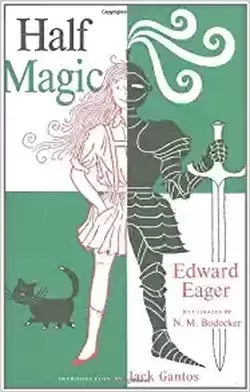 The last book I read by Linda Griffin was Bridges, a beautiful, tender romance that left me smiling and blinking back tears. You can imagine that I'm thrilled to celebrate her latest book, Reluctant Hearts, with an interview! Before we get to the book, let's learn more about this talented author. Welcome, Linda! 1) What sort of books did you enjoy reading as a child? Did you have a favorite book or series? An early favorite was Half Magic by Edward Eager. I read it so often that I can still recite the first few pages word for word: “It began one summer about thirty years ago, and it happened to four children…” Later my sister and I read the Williamsburg series by Elswyth Thane out loud to each other while we did the dishes, and over the years I must have read them at least twenty times. I also loved Robert A. Heinlein’s science fiction “books for boys,” especially Farmer in the Sky and Time for the Stars. 2) What sort of books do you enjoy reading nowadays? I read a wide variety of fiction, but lately I’ve also been reading a lot of memoirs. A former YA librarian friend keeps recommending YA books to me, so I’ve enjoyed quite a few of those too. 3) Around what age did you realize that you liked to write? And when did you know that you wanted to write books? I knew I wanted to be a “book maker” as soon as I learned to read and realized that somebody had to create those words. I wrote my first story, “Judy and the Fairies,” when I was six, using a plot device I stole from a “Little Lulu” comic book. Little Miss Sunbeam! SUCH A CUTIE! 4) What’s the first thing you wrote that you remember being proud of? I wrote a story called “The Wind” for an eighth grade English class, and it earned an A+. My mother didn’t like it, though, because I wrote, “She cursed the wind.” 5) Tell us about the creative force within you. What inspires you to write, to create? I have no idea. Sometimes I get what I call glimmers, and sometimes I don’t. It happens most often when two different ideas come together. I think the level of creativity in the universe is higher at some times than others. 6) What’s your writing space like? I have two. My desk in the den is where I write during the day. I like the straight chair because it’s better for my back, but it’s also an heirloom that originally belonged to my grandmother. In the evenings I write in the living room in front of the TV, which gets very little of my attention, but sometimes gives me a name when I need one and occasionally sparks a glimmer. A conversation between the Winchester brothers on Supernatural somehow triggered a romance! That chair is a treasure! And you make an excellent case of writing in front of the television! 7) Do you have a favorite time of day to write? Any habits or little rituals that put you in a writing mindset? I don’t really have a choice. If I did, it would be in the morning when my creative energy is the highest, but I’m at the mercy of my characters, who are partial to bedtime and the middle of the night. I have to keep a notebook next to the bed so I can take dictation when they start having a conversation. LOL! Your characters dictate your writing schedule! I can understand that. 8) Time to talk about Reluctant Hearts (rubbing hands together). But first, how did you come up with the idea for the collection? Are there any interesting tidbits you’d care to share with us? Each of the four novellas had its initial trigger. A TV show bank robbery for “No Regrets,” a newspaper article about registered sex offenders and Halloween for “Probation,” a meditation on “The Shape of Life,” and the TV show House Hunters for, of course, “House Hunters.” Each story includes at least one character who isn’t ready to love again, so I brought them together with the theme of unexpected romance overcoming reluctant hearts. 9) I comprehend that you’ve just recently published a book. Still, I can’t help but ask – do you have anything waiting in the wings? Next up is a suspense novella, The Axe. I entered the first 500 words in a competition and one of the judges, Morena Stamm of the Wild Rose Press, asked to see the full manuscript. Much to my surprise, it’s now under contract! Oh, wow! That's wonderful! cover art by Jennifer Greeff Linda, thank you for sharing your time and travels with us. Congratulations on your new release! And now, Reluctant Hearts! cover art by Jennifer Greeff Four couples, four stories: Darien Francis and Richard Li meet during a bank robbery, but she’s afraid to love again. Shane Kenniston and Beth Parker are reacquainted years after she had a crush on him, but she is a recent widow, and Shane’s life was upended by a false accusation. David Early and Kate Howard meet in the Laundromat, but her life is consumed by the needs of her disabled child, and David isn’t ready for the responsibility. Realtor Frank Ellison meets Kayla Barnes at an open house, but a mistaken first impression derails any chance of romance. Can they all overcome the obstacles to love? ExcerptsWe are lucky enough to have short excerpts from each novella in Reluctant Hearts. Thank you, Linda! No Regrets “Well, you are too good to be true, aren’t you?” She grinned, and then she sobered, and their eyes met. They stopped walking. The dogs tugged at the leashes and strayed from the path, sniffing at everything they could reach. Richard tossed the remains of his lunch in a trash container and put his arms around her. The sounds of traffic grew distant, muted. Manning walked in a circle, wrapping the leash around their legs. They both laughed, and they kissed quickly and then not so quickly. “In a public place,” she said in mock disapproval. Probation “So, you don’t smoke, you don’t drink, and you don’t do Halloween? What do you do?” “Whatever you’ll let me do, I guess,” he said. He hadn’t used that old line since college. She was surprised, but she didn’t seem upset. She gazed at him speculatively for a few seconds and then leaned towards him. He didn’t want to take anything for granted, so he waited for her to kiss him first, but he responded without hesitation. She tasted of beer and cherry-flavored lip gloss. “Oh, gosh,” she said. “Wait till I tell Patty I kissed Mr. Kenniston.” The Shape of Life They backed away from the stove, the coffee forgotten, drifted, as if without purpose, through the living room, quietly past Chris’s room, into Kate’s bedroom. “I may hate you in the morning,” she warned. “I’ll risk it,” he said. He stood close to her in the half-darkness, feeling the soft contours of her body against his while he freed her bright, velvety hair. “Very nice,” he said, and his hands slid down to find the hook of her halter top. “David,” she said, her voice a little blurred, as in a dream. “Promise me we won’t be sorry.” House Hunters Her shape had never bothered him before. But right now, it was distracting him to know she had that lovely, decidedly female body under her jeans and sweater. He turned his head toward her, and she looked up at him, and he leaned in to kiss her. “Don’t,” she said, but she kissed him back. The gesture was more friendly than passionate, but her lips were soft and sweet all the same. He knew it wasn’t supposed to be happening, but he couldn’t remember why, and he liked it—more than he liked the Canaletto.  About the Author Linda Griffin was born and raised in San Diego, California and wouldn’t want to live anywhere else. She earned a BA in English from San Diego State University and an MLS from UCLA. She began her career as a reference and collection development librarian in the Art and Music Section of the San Diego Public Library and then transferred to the Literature and Languages Section where she managed the Central Library’s fiction collection. She had a short story published in the SDSU literary journal, The Phoenix, but most of her magazine publications came after she left the library to spend more time on her writing. Her stories, in every length from short shorts to novellas, have been published in numerous journals, including Eclectica, Thema Literary Journal, The Avalon Literary Review, and most recently Willow River. In addition to the three R’s—reading, writing, and research—she enjoys Scrabble, movies, and travel and has visited 48 states and three countries. |
Romance!It's no secret that I prefer fat HEAs. Where better than in a beautiful romance? Archives
June 2024
Categories
All
NewsletterFrom me to you with a smile. Thank you!You have successfully joined our subscriber list. |
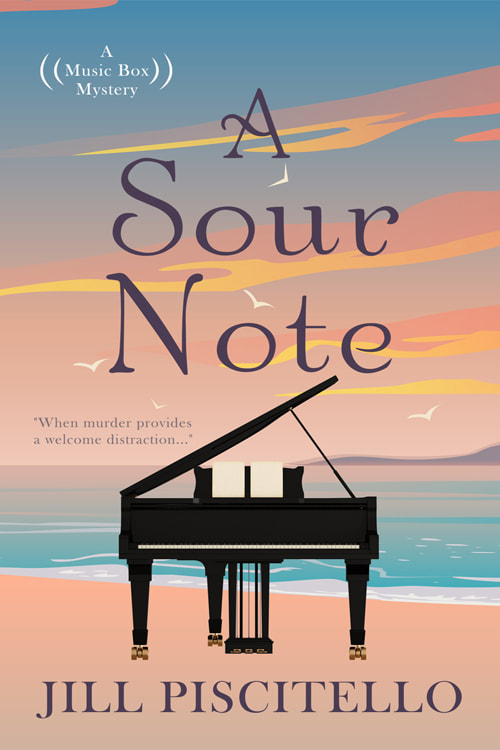
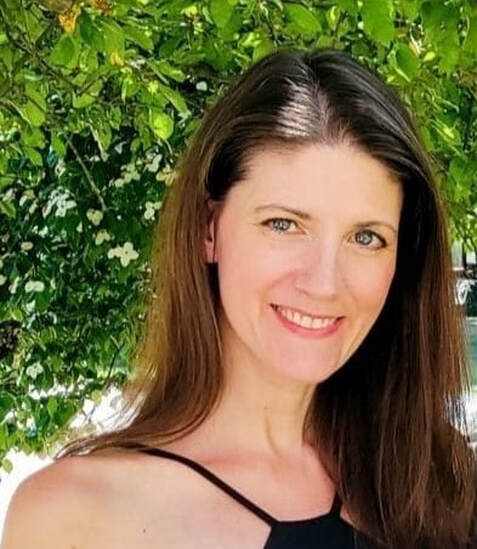
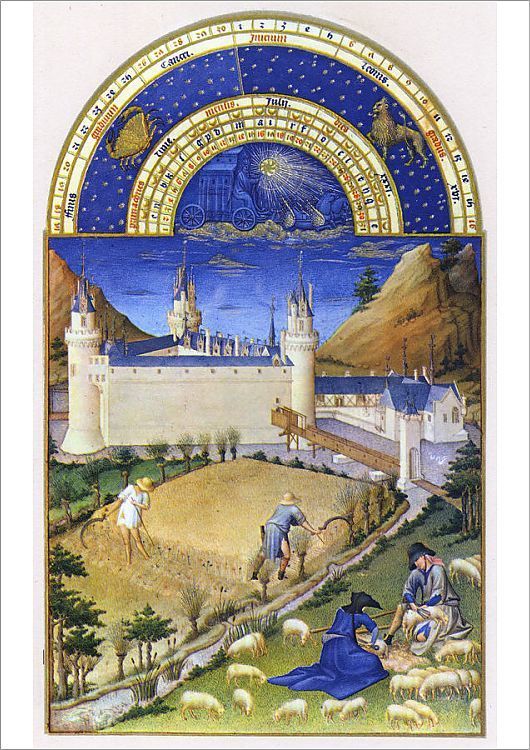



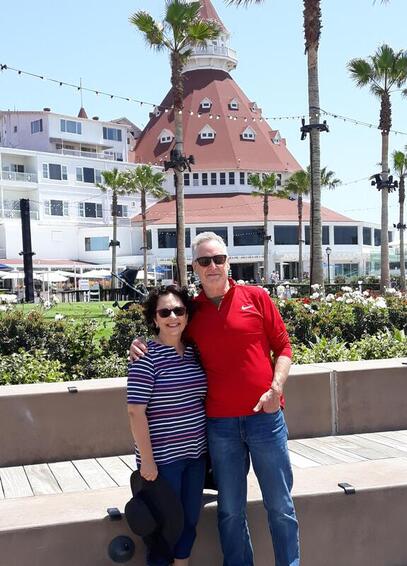
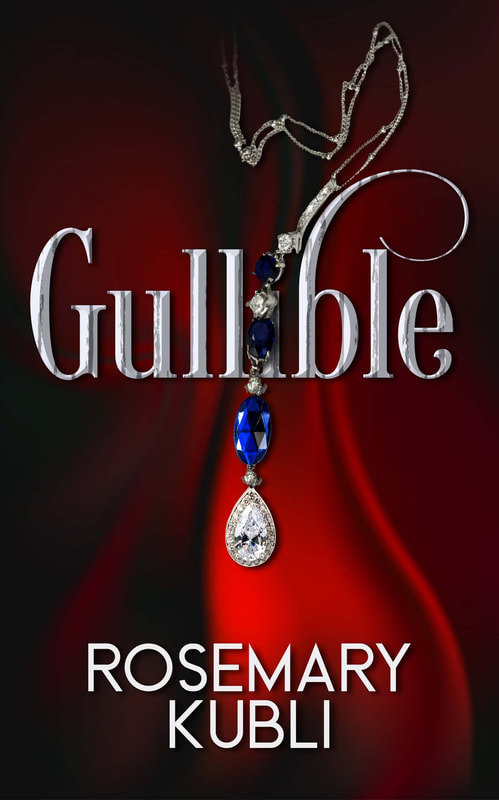
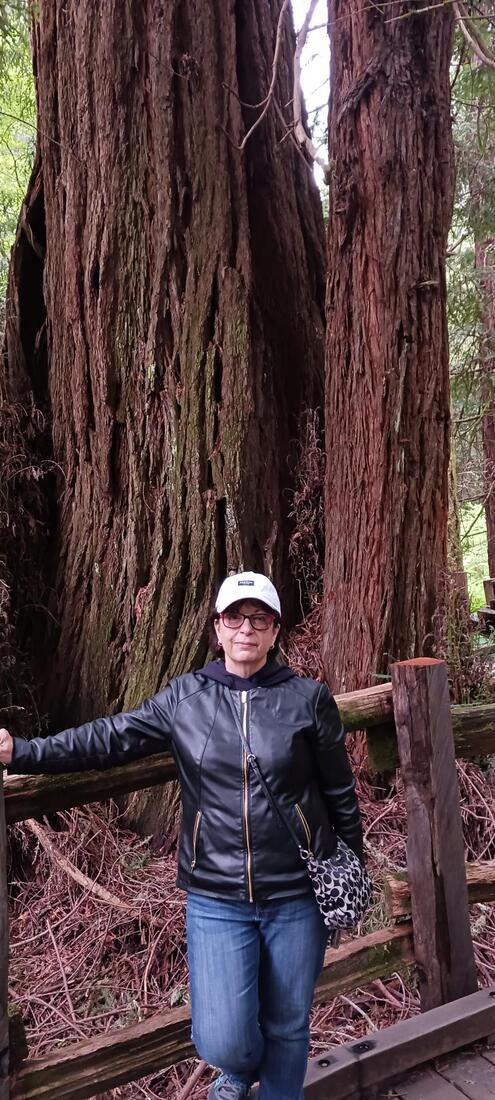

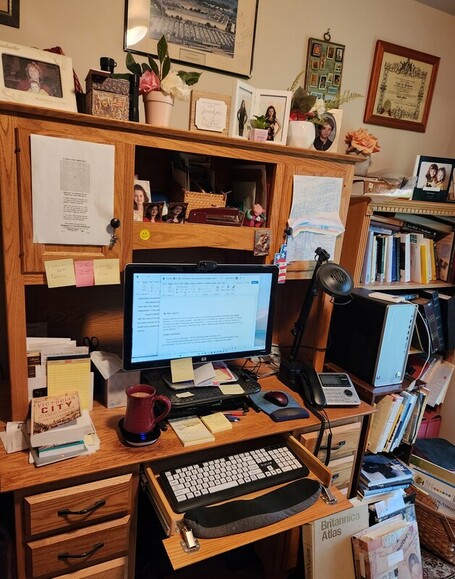
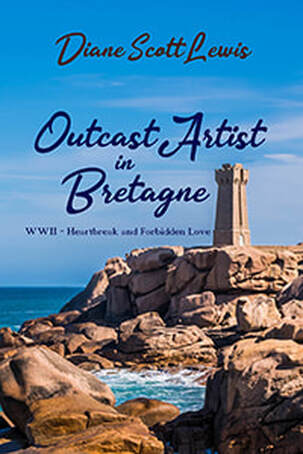

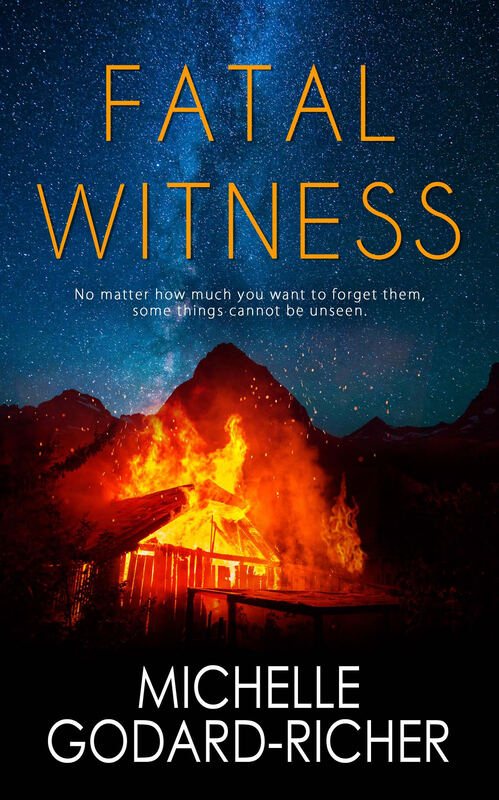

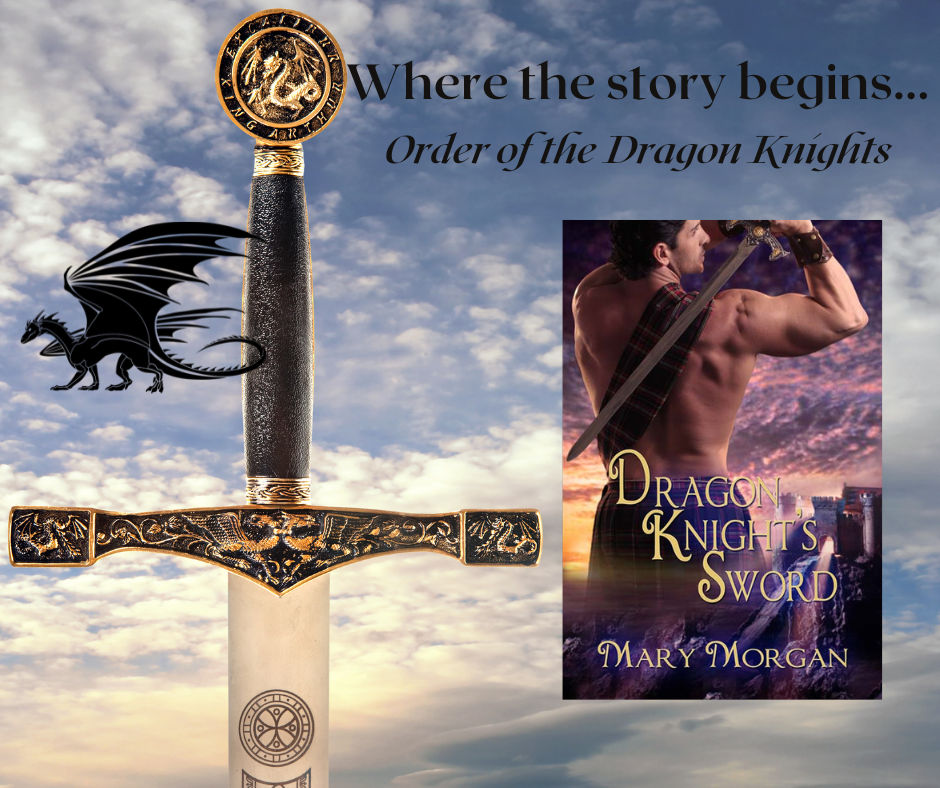


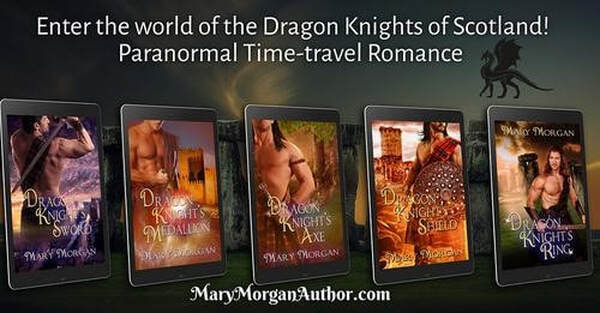
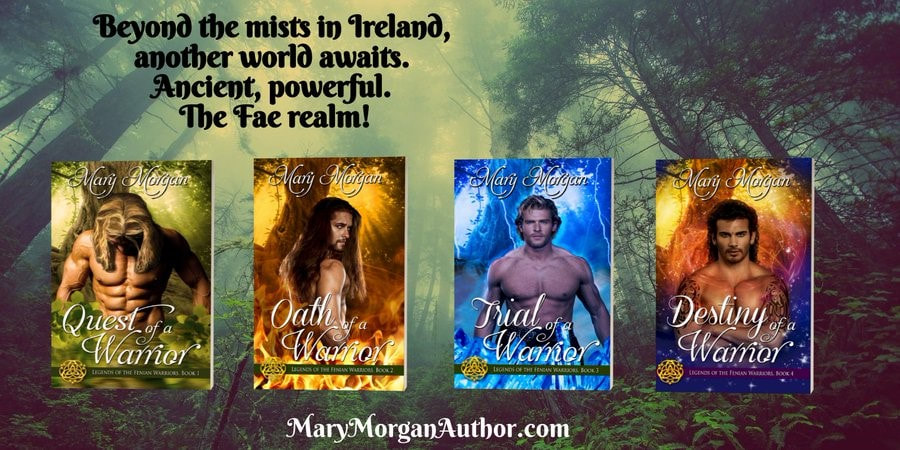





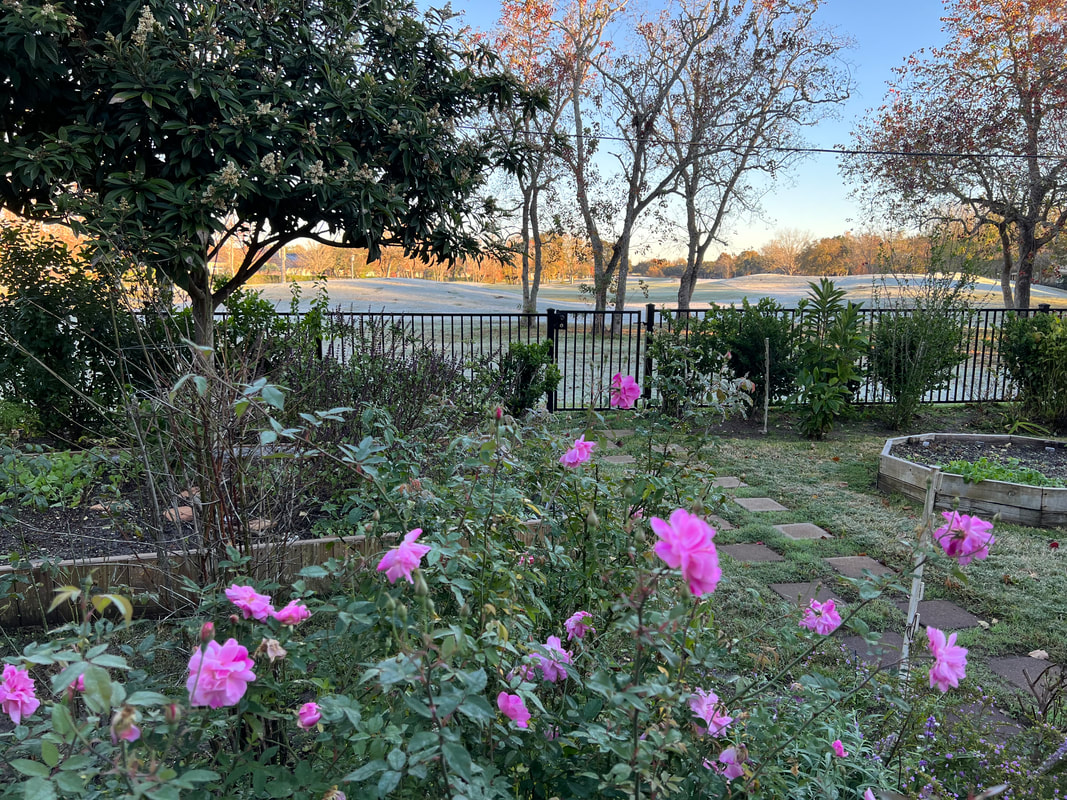

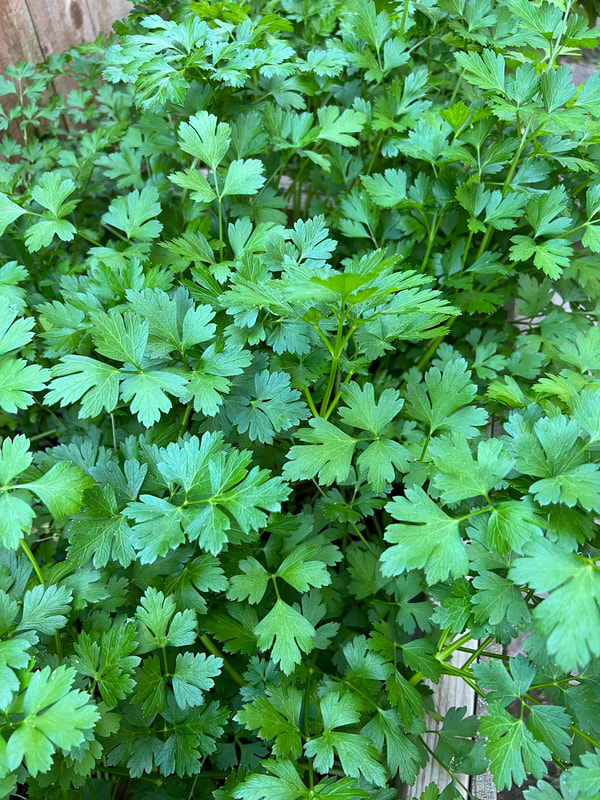
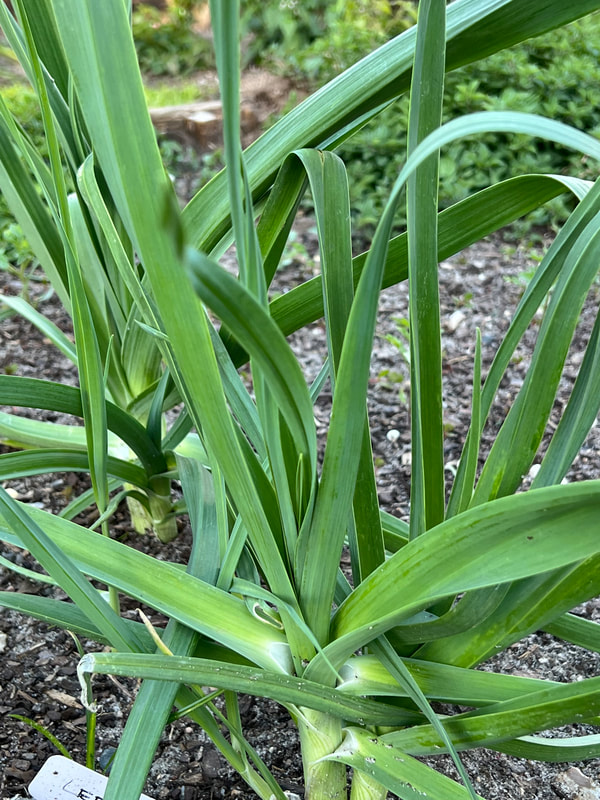
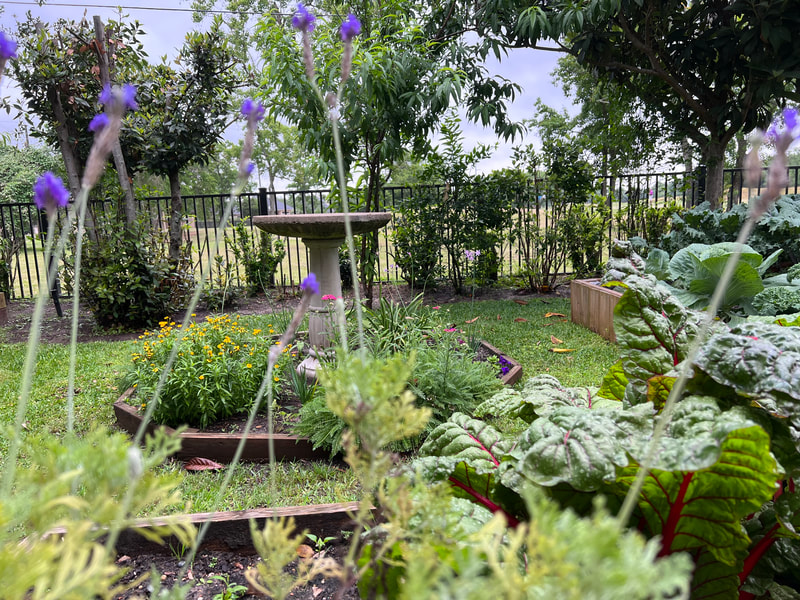

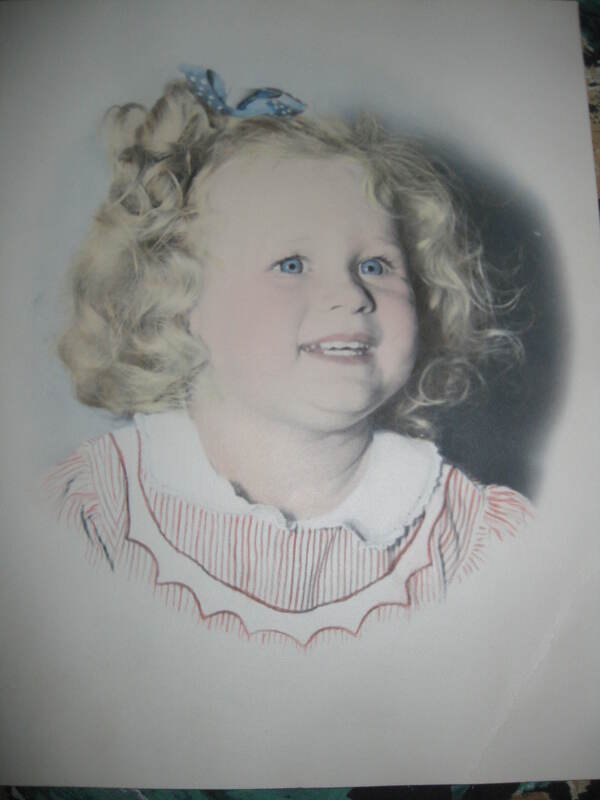


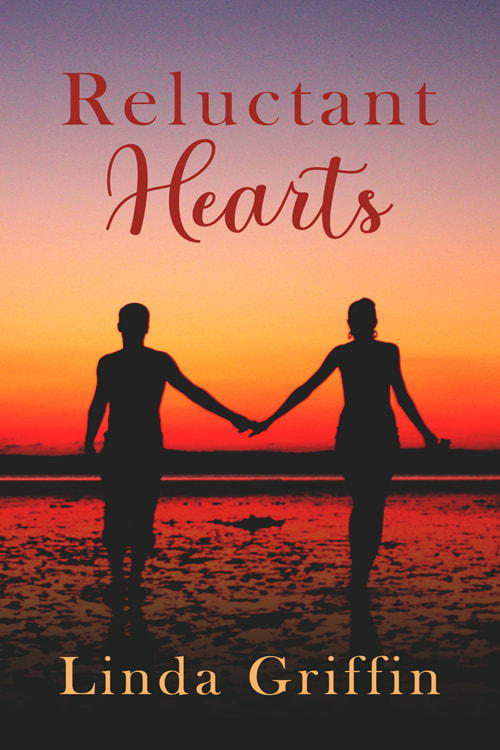


 RSS Feed
RSS Feed